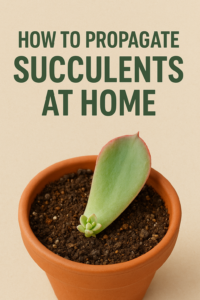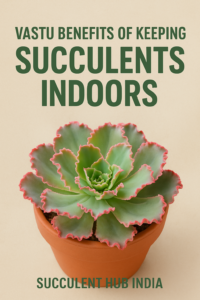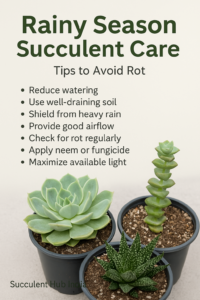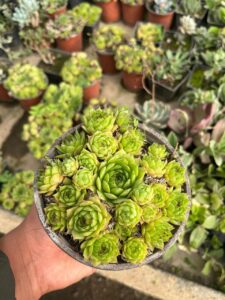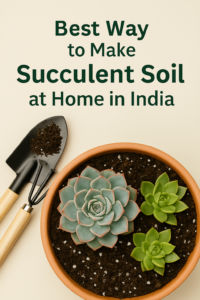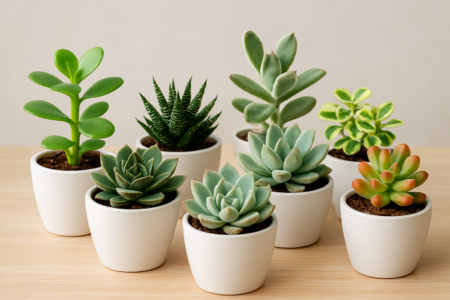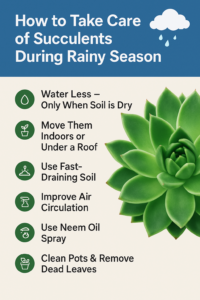🌵 Are your succulents looking less than stellar? You’re not alone! Many plant enthusiasts find themselves puzzled when their seemingly low-maintenance succulents start to wither, stretch, or develop mysterious spots. The truth is, while succulents are hardy, they’re not invincible.
Common mistakes can turn these desert gems from thriving to barely surviving. But don’t worry – we’ve got you covered! In this post, we’ll dive into the 7 most common pitfalls that succulent growers face. From the sneaky dangers of overwatering to the often-overlooked importance of seasonal care, we’ll explore why these issues occur and, more importantly, how to avoid them. Whether you’re a newbie succulent parent or a seasoned grower looking to refine your skills, this guide will help you cultivate a lush, healthy succulent garden that’s the envy of every plant lover.
Overwatering: The Silent Killer
Recognizing signs of overwatering
Overwatering is one of the most common and detrimental mistakes succulent enthusiasts make. To protect your beloved plants, it’s crucial to identify the telltale signs of excessive watering:
- Soft, mushy leaves
- Yellowing or translucent leaves
- Leaf drop
- Black spots on leaves or stems
- Mold growth on soil surface
A simple test to confirm overwatering is gently squeezing a leaf. If it feels squishy and water oozes out, your succulent is likely waterlogged. Remember, succulents store water in their leaves and stems, so they can tolerate drought better than excess moisture.
Proper watering frequency for succulents
The key to successful succulent care lies in mimicking their natural desert habitat. Unlike traditional houseplants, succulents thrive on a “soak and dry” watering method:
- Water thoroughly when the soil is completely dry
- Allow excess water to drain freely
- Wait for the soil to dry out completely before watering again
The frequency of watering depends on various factors:
| Factor | Effect on Watering Frequency |
|---|---|
| Season | Less frequent in winter, more in summer |
| Light exposure | More frequent in bright light |
| Pot size | Less frequent for larger pots |
| Humidity | Less frequent in humid environments |
| Air circulation | More frequent with good air flow |
As a general rule, water your succulents every 7-10 days during the growing season and reduce to once every 3-4 weeks in winter. Always check the soil moisture before watering to avoid overwatering.
Choosing the right soil for optimal drainage
Proper soil composition is crucial for preventing overwatering and ensuring healthy succulent growth. The ideal succulent soil should:
- Drain quickly
- Retain some moisture
- Provide good aeration for roots
To achieve this balance, use a well-draining potting mix specifically designed for succulents and cacti. If you prefer to create your own mix, follow this simple recipe:
- 2 parts all-purpose potting soil
- 1 part coarse sand (not beach sand)
- 1 part perlite or pumice
This combination ensures excellent drainage while providing essential nutrients. Additionally, consider adding a layer of gravel or small pebbles at the bottom of the pot to further improve drainage.
By understanding the signs of overwatering, implementing proper watering techniques, and using the right soil, you’ll create an optimal environment for your succulents to thrive. With these foundational practices in place, you’ll be well-equipped to tackle other aspects of succulent care and avoid common pitfalls. Next, we’ll explore another crucial factor in succulent growth: finding the perfect balance of light exposure.
Inadequate Lighting: Finding the Sweet Spot
Understanding succulent light requirements
Succulents are known for their love of sunlight, but it’s crucial to understand that not all succulents have the same light requirements. Generally, most succulents thrive in bright, indirect light for at least 6 hours a day. However, some species can tolerate full sun, while others prefer partial shade.
Here’s a quick reference table for common succulent light requirements:
| Succulent Type | Light Preference |
|---|---|
| Echeveria | Full sun to partial shade |
| Sedum | Full sun |
| Haworthia | Bright, indirect light |
| Aloe | Bright, indirect to full sun |
| Jade Plant | Bright, indirect light |
Avoiding sunburn and etiolation
Two common issues arising from improper lighting are sunburn and etiolation. Sunburn occurs when succulents receive too much direct sunlight, causing discoloration or brown spots on leaves. On the other hand, etiolation happens when succulents don’t get enough light, resulting in stretched-out growth and pale coloration.
To avoid these problems:
- Gradually acclimate succulents to increased light exposure
- Use sheer curtains or blinds to filter intense sunlight
- Rotate plants regularly to ensure even light distribution
- Monitor leaf color and growth patterns for signs of light stress
Best placement for indoor succulents
Finding the perfect spot for your indoor succulents can be tricky. Here are some tips for optimal placement:
- South-facing windows: Ideal for most succulents, providing bright light throughout the day
- East-facing windows: Good for succulents that prefer morning sun and afternoon shade
- West-facing windows: Suitable for sun-loving succulents that can handle intense afternoon light
- North-facing windows: Best for shade-loving succulents or those that prefer indirect light
Remember to keep succulents away from drafty areas and air conditioning vents, as sudden temperature changes can stress the plants.
Using grow lights effectively
When natural light is insufficient, grow lights can be an excellent solution for indoor succulents. Here’s how to use them effectively:
- Choose the right type of light:
- LED grow lights are energy-efficient and produce less heat
- Fluorescent lights work well for small spaces and are cost-effective
- Full-spectrum lights mimic natural sunlight and promote healthy growth
- Position lights correctly:
- Place lights 6-12 inches above succulents
- Adjust distance based on light intensity and plant needs
- Set appropriate duration:
- Provide 12-14 hours of artificial light daily
- Use a timer to maintain consistent lighting schedules
- Combine with natural light when possible:
- Supplement natural light with grow lights during darker months
- Gradually transition plants between natural and artificial light sources
By understanding and implementing these lighting strategies, you’ll be well on your way to growing healthy, vibrant succulents. With proper lighting, your plants will develop strong colors, compact growth, and resist common issues like pest infestations and diseases. In the next section, we’ll explore the importance of correct potting techniques to further ensure your succulents thrive.

